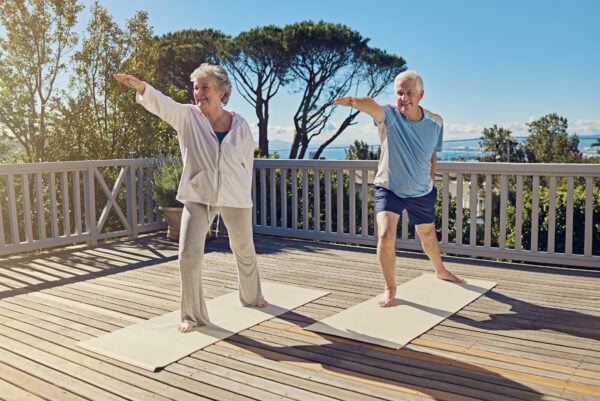
Did you know that every year, 1 in 4 adults over the age of 65 experiences a fall? Even more concerning, 1 in 5 of those falls leads to serious injuries like broken bones or head trauma. While falls are common, they’re not an inevitable part of aging. The good news? Research shows that with a few simple changes and targeted exercises, you can significantly reduce your risk of falling.
Build a Strong Foundation: Why Lower Body Strength Matters
Your legs are your foundation for stability. As we age, we naturally lose muscle mass, which can weaken our lower body and increase the risk of falls. But here’s the silver lining: resistance training can help rebuild and maintain that strength, keeping you steady on your feet.
Effective Lower Body Strengthening Activities:
- Walking regularly: A simple way to stay active and build endurance.
- Water exercises: Gentle on joints while improving strength.
- Weight lifting or resistance bands: Great for targeting specific muscles.
- Bodyweight exercises: Squats, lunges, and other moves that use your own weight.
- Stair climbing: A functional way to build strength and balance.
A physical therapist can design a personalized program to target the muscles you need for better stability and balance.
Balance Training: Use It or Lose It
Balance is like any other skill—it requires practice to maintain and improve. Incorporating balance exercises into your routine can make a big difference in preventing falls.
Try These Simple Balance Exercises:
- Single-leg stands: Hold for 10–30 seconds on each foot.
- Eyes-closed standing: Stand with your feet together and eyes closed for 10–15 seconds.
- Chair rises: Stand up from a chair without using your hands.
- Heel-to-toe walking: Walk in a straight line, placing one foot directly in front of the other.
Pro Tip: Always have a sturdy surface nearby for support, and stop if you feel dizzy or unsteady.
Create a Safer Home Environment
Many falls happen at home, but small adjustments can make a big difference in your safety.
Home Safety Tips:
- Use night lights to improve visibility in hallways and bathrooms.
- Remove loose rugs or clutter that could trip you.
- Secure cords and cables out of walking paths.
- Install grab bars in bathrooms near the toilet and shower.
- Keep frequently used items within easy reach to avoid risky climbing.
Don’t Overlook Vision and Medications
Your eyes and medications play a crucial role in your balance. Here’s how to address these often-overlooked factors:
- Get regular vision checks: Poor eyesight can make it harder to spot tripping hazards.
- Review your medications: Some medications can cause dizziness or drowsiness. Talk to your doctor or pharmacist if you notice these side effects.
When to See a Physical Therapist
If you’ve noticed increased unsteadiness or have experienced a fall, a physical therapist can help. They can:
- Assess your balance and strength.
- Create a personalized exercise program.
- Teach you strategies to stay safe and confident.
- Collaborate with your doctor or pharmacist on vision or medication concerns.
Bottom Line: Take Action Today
Falls are common, but they don’t have to be part of aging. By strengthening your legs, practicing balance, and making your home safer, you can reduce your risk and stay active.
This Fall Prevention Month, take one small step toward better balance—you’ll be glad you did.
References
- Exercise for falls and fracture prevention in long-term care facilities
- Preventing Falls in Older Persons
- The Effectiveness of Physical Therapist–Administered Group-Based Exercise on Fall Prevention
- Exergame technology and interactive interventions for elderly fall prevention
Additional Resources:

